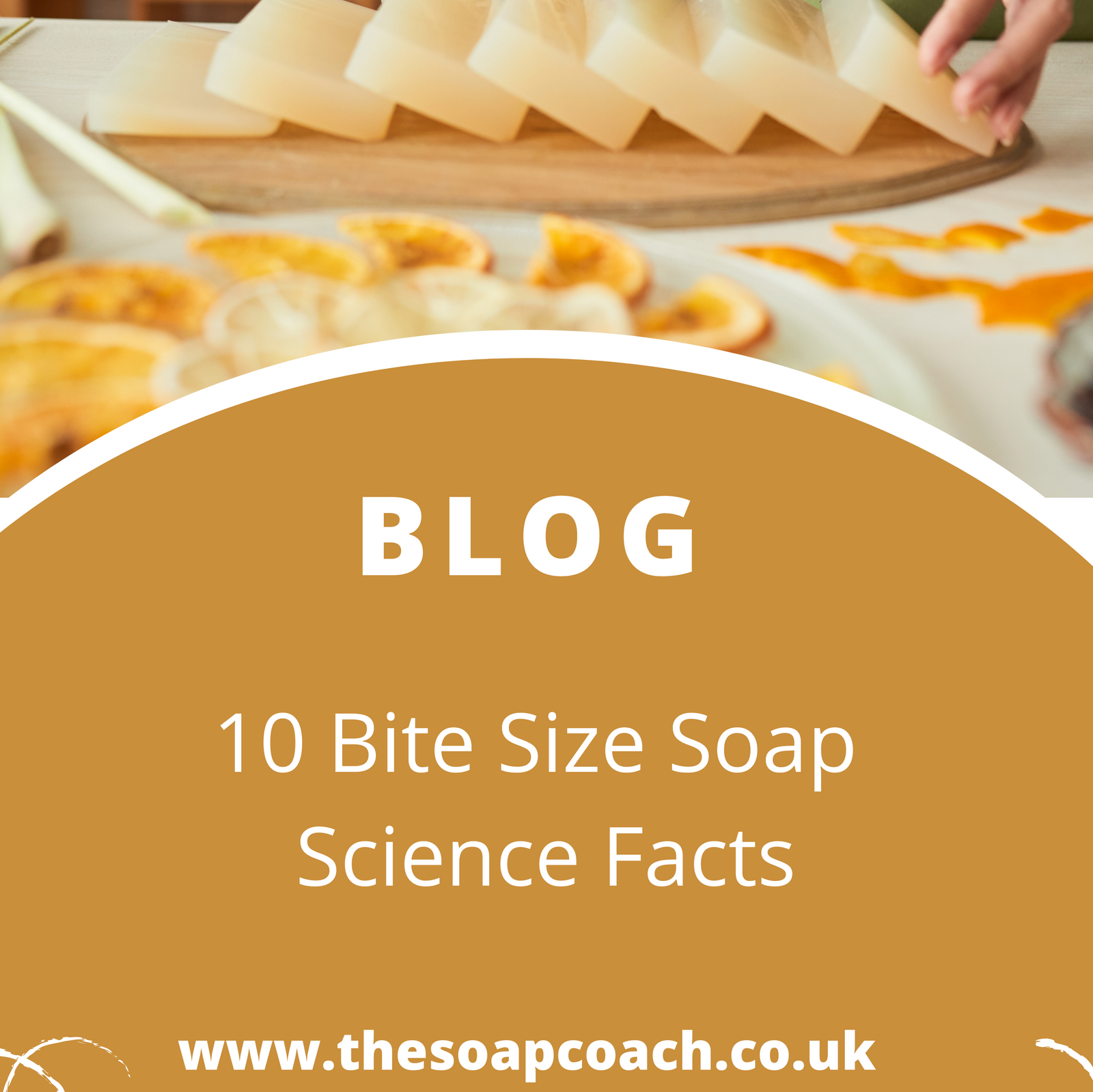10 Bite Size Soap Science Facts

Soap making is chemistry. That is it. Which makes it science but lets jazz it up a bit. Science is most definitely not boring you just need to pick out the good bits and simplify them!
I am pretty sure science at school was not my strong point , it was quite a long time ago now but now I love it and find it fascinating which is good and bad depending upon your point of view. It means I have a good understanding of what goes on in that soap mould but also means if you take a soap making workshop with me you most likely will get a science lesson too 😆
These are my top 10 interesting soap science facts. Not in any particular order although they do seem to get a little more technical the further down they go!!
- The boiling point of your lye solution is 245 degrees fahrenheit or 118 in centigrade
- No glycerin is added to your soap but it is created as a by product of the saponification process, this is why you will find it on the ingredients label of every bar of handmade soap.
-
Soap molecules are long and thin and have a water loving end (hydrophillic) and a grease and oil loving end (hydrophobic). When you wash your hands, the hydrophobic end of the soap molecule grabs the grease and oils and the dirt that is trapped within whilst the hydrophillic end binds with the water which then pulls the hydrophobic end complete with dirt and oils away and washes them down the sink
-
The fumes that are given off when you mix you water with your sodium hydroxide are hydrogen. ( Bonus - the reaction that occurs between your NaOH and water and makes it hot very quickly is called an exothermic reaction) It is worth noting that if you use ice cubes to mix your NaOH with it will drastically reduce the fumes and also keep your lye solution below 100 f once mixed.

- Soap is a sodium salt - the same kind of salt you put on your food (in theory!
- Soap is a surfactant - that means it dissolves in both water and oil - this is why you can rinse oil off your hands with soap. Hot water not necessary but it does make the job a little easier.
- You can use saturated or unsaturated fats to make soap - saturated fats ie coconut oil will make a harder soap, while unsaturated ie olive oil will make it softer, on that point most solid fats are saturated, whilst most liquid oils are unsaturated.
- The final PH of your soap varies depending upon the type of fatty acids in your chosen fats and oils. As a guide it can be between 10.1 and 11.4.
- It is possible to reduce the PH of your soap even further with hot process soap making by adding a low PH fatty acid or even something like citric acid to your soap after the cook and before you put it in the mould.
- The final composition of the superfat in your cold processed bar of soap will depend on the make up of your recipe. Those ingredients that react with lye the slowest will make up the biggest proportion on your superfat. To put this in to perspective, if you were to make a very simple coconut oil/olive oil soap at 50/50 ratio of each you might expect the superfat to be 50/50 too but because the unsaturated oils in olive oil are slower to react with lye than the saturated fats in coconut oil so you will have a higher proportion of olive oil in your finished bar.
What can I say - nothing in soap making is simple which is why is can be such a challenging hobby to get your head around.
If you found this blog interesting and would like to know more you may like to take a look at a book called Scientific Soap Making by Kevin Dunn. Much of what I have learnt has come from this book however it is fair to say it is not for the faint hearted. Much of the content is extremely scientific and a minimum of A level standard. But if you like a challenge it may well be for you.
If you are fascinated and now would like to learn how to make soap have a quick browse around the website and see what options are best for you. Online and in person courses or pre recorded videos are all available with support from me to help you make that first batch.
Good luck.
Leave a comment